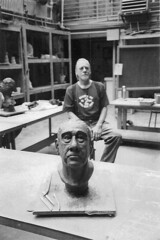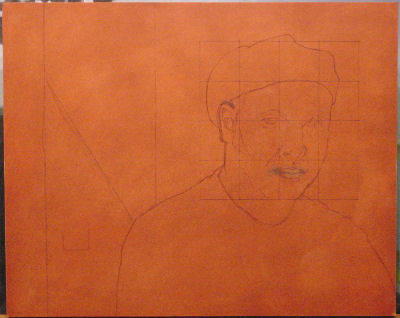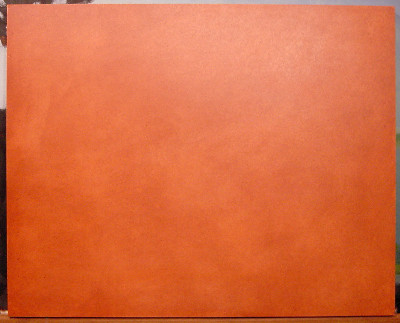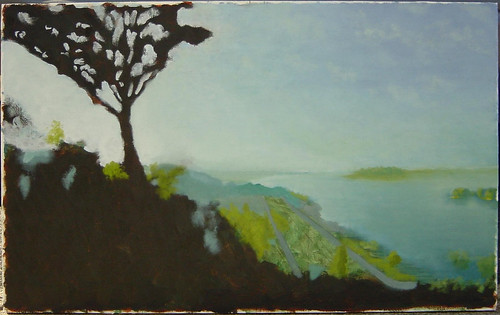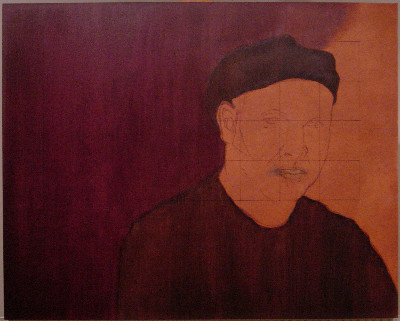
self portrait, 20" x 16", oil on panel (in progress)
It took me a few days to decide how I wanted to proceed. Should I do a detailed underpainting using Venetian Red? Should I use Lead White for lighter values or use turpentine to reveal white from beneath the
imprimatura? Both of these normally begin an indirect painting process where the paint is applied in translucent layers, allowing the values of the underpainting to remain visible. The opposite would be to begin painting opaquely in which case an underpainting wouldn't provide much utility. For the most part, there is very little going on in this painting other than the face. Underpainting the face might be useful, but everything else I think I can manage during the glazing process.
I just began by thinning a mixture of Ultramarine Blue and Burnt Sienna with turpentine and filling in my shirt and hat. These two pigments mix to black. (Why not use black out of the tube? Maybe I'll write about that another time. I suppose I could have layered each color separately and mixed them optically though.) Then I filled in most of the background with a Dioxazine Violet. Normally, I mix violet. In fact, I've never used this pigment before, but it was just sitting there on my bench and I thought I'd give it a try.
I will go over both these areas again to darken parts of them even further. One of the old school painting rules is to keep darks thin. I believe part of this is just conservation of paint as you don't really need many thin layers of a dark color for it to appear solidly dark. Lights that need a value higher than the underpainting,
imprimatura or toned ground, will likely be opaque out of necessity. If you have a value established by an underpainting though, you can just apply a thin glaze.
I still have a few more darks to apply and I haven't decided how to approach the face yet. To those painters that don't struggle deciding which path to take, my hat's off to you.
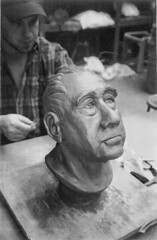 This deviates a bit from painting, but then so do I. These are a few photos from a sculpture class I took two years ago. One of the best things I ever did to help my painting was to take sculpture. I had the opportunity to do both figure modeling and portraiture. The figure class was particularly intensive and required a great amount of anatomical study as homework - drawing plates from anatomy books.
This deviates a bit from painting, but then so do I. These are a few photos from a sculpture class I took two years ago. One of the best things I ever did to help my painting was to take sculpture. I had the opportunity to do both figure modeling and portraiture. The figure class was particularly intensive and required a great amount of anatomical study as homework - drawing plates from anatomy books.